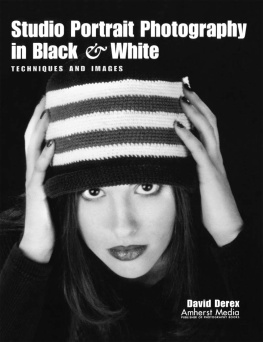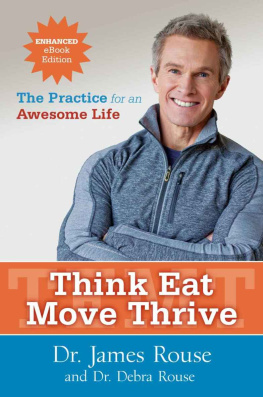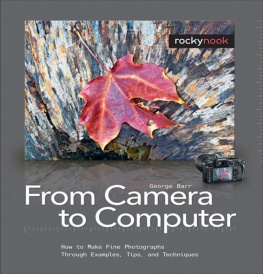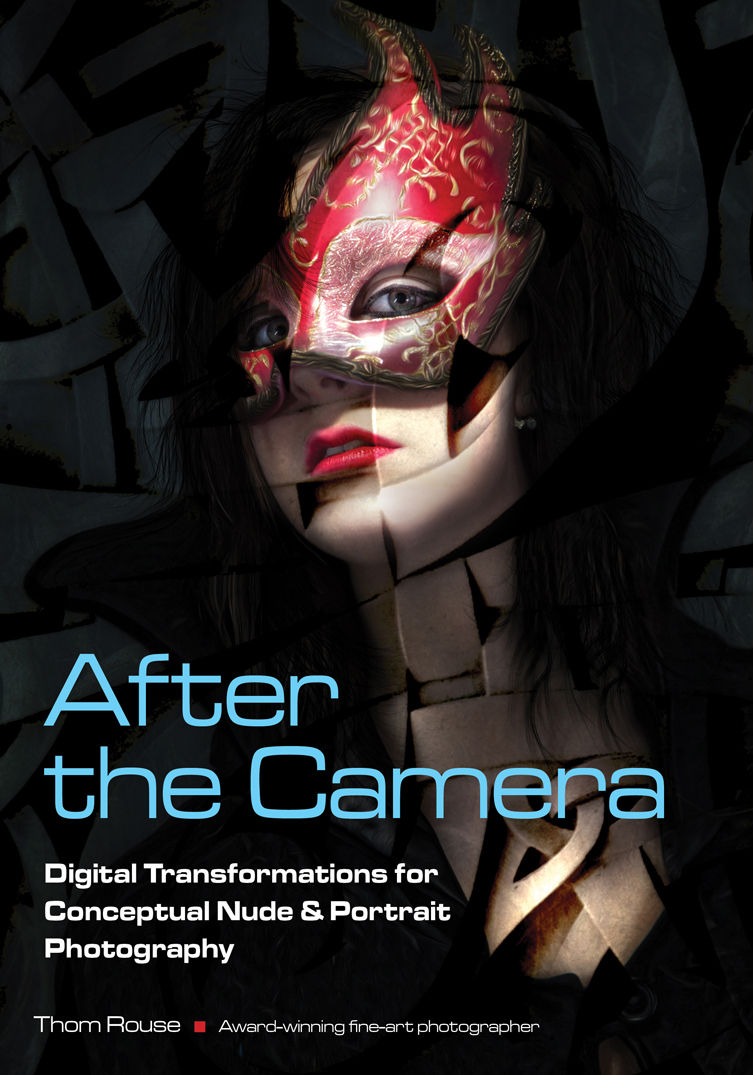
To my wife Jeanne, who is in every way responsible
for my career. I hope someday she can forgive herself.
Copyright 2016 by Thom Rouse
All rights reserved.
All photographs by the author unless otherwise noted.
Published by:
Amherst Media, Inc., PO Box 538, Buffalo, NY 14213
www.AmherstMedia.com
Publisher: Craig Alesse
Senior Editor/Production Manager: Michelle Perkins
Editors: Barbara A. Lynch-Johnt, Harvey Goldstein, Beth Alesse
Associate Publisher: Kate Neaverth
Editorial Assistance from: Carey A. Miller, Sally Jarzab, John S. Loder
Business Manager: Adam Richards
Warehouse and Fulfillment Manager: Roger Singo
ISBN-13: 978-1-68203-006-6
Library of Congress Control Number: 2015953686
10 9 8 7 6 5 4 3 2 1
No part of this publication may be reproduced, stored, or transmitted in any form or by any means, electronic, mechanical, photocopied, recorded or otherwise, without prior written consent from the publisher.
Notice of Disclaimer: The information contained in this book is based on the authors experience and opinions. The author and publisher will not be held liable for the use or misuse of the information in this book.

www.facebook.com/AmherstMediaInc
www.youtube.com/c/AmherstMedia
www.twitter.com/AmherstMedia
Contents



T hom Rouse (M. Photog. MEI, CR, CPP, F-ASP) began his career as a portrait and wedding photographer in 1994. Based near Chicago, he now divides his time between commercial, fine art, and commissioned fine art images with his clients as the central subject of his pieces. His conceptual fine art images utilize real world photographs blended and manipulated to create an alternative to real world perception. Thom also lectures and teaches workshops on topics ranging from Photoshop as an artists tool to visual literacy to and lighting and posing for figure studies.
Thom holds the PPA Master of Photography degree, the Award of Excellence, the Master of Electronic Imaging degree, and the Photographic Craftsman degree. He is a Fellow in the American Society of Photographers and a member of XXV. He has 54 PPA Loan Collection images and has won the ASP Gold Medallion twice. He has received five Diamond, four Platinum and one Gold Photographer of the Year Awards. He has received the Kodak Elite Award and the Canon Par Excellence Select Award, as well as numerous Kodak Gallery and Fuji Masterpiece Awards. Thoms work has been exhibited throughout the United States as well as Canada, China, Japan, Korea, and Europe.

To learn more, visit .
I nfinite Turtle Theory is an image for which the title came first and the visual concept later. I have a number of such images, and I keep lists of titles that I review when Im stuck for inspiration. It seems that many visual artists have taken inspiration from writers, while at the same time many writers have taken inspiration from visual art. The Greeks called it ekphrasis ; the description of one art form by another through words. But we make images because for some things there are no words.
The origin of The Infinite Turtle Theory is uncertain, but it has been used as a metaphor in many philosophical and scientific discussions with a variety of meanings. The base of the image has a turtle, on top of a turtle, on top of another turtle and implies that its turtles all the way down as it is stated in many of the stories of the Infinite Turtle Theory.
The central subject in a vintage dress has her right palm raised toward heaven, and her left palm turned toward Earth in the tradition of Sufi dancers. In the background are subtle images of an angel and of Buddha. The many symbols resonate differently with individual viewers of the image, which is completely intentional. We seek to create an experience for the audience of our images, and using widely known symbols is an effective way to elicit a viewers experience with an image.
The central subject was photographed on a medium gray background (see bottom left of finished image) allowing a variety of textures and objects to show well in various layer blending modes. The model stood with one foot on each of two stools that were removed in postproduction and replaced with images of ceramic garden turtles. No turtles were harmed in the making of this image.

Straight out of camera



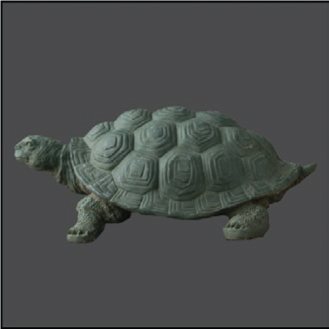
Several of numerous incorporated elements
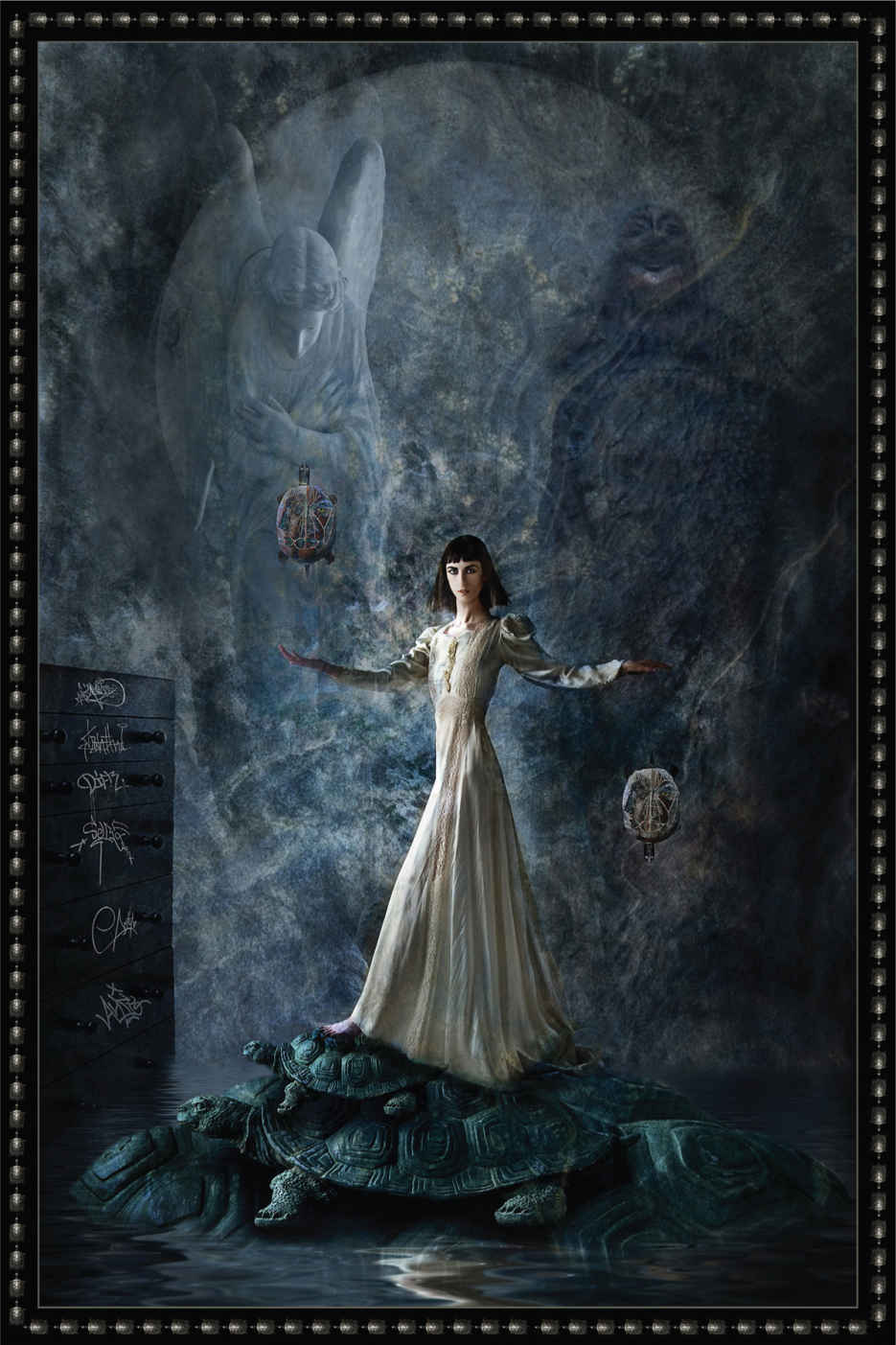
The Infinite Turtle Theory , finished image
T he image Wild Ride was composed using three images taken from wildly different places and circumstances. One of features I love about Photoshop as a fine art medium is the opportunity to use images without regard to the time and place of their origin. In my work, an image from a decade or more ago, and from thousands of miles away, might be paired with something from a session yesterday just down the street. Photoshop is an opportunity to create an alternative history with photography.
Each component of the image was captured in a separate place and time. Wild Ride was composed from an image of a park in an eastern residential area of Venice. The model, Anne Duffy, was a traveling model touring the US from Australia. Anne was photographed by window light in the studio with the pose just as it is seen in the final image.
The horse, Safeen, was a beautiful Arabian owned by a photographer friend. Safeen was photographed with his owner, Kerri, at a nearby stable. The late Safeen was a beautiful horse who loved to perform for the camera. Kerri simply released Safeen into the corral, and he began showing off and performing, always keeping an eye on us to make sure we were watching.
Like many of my images, Wild Ride was conceived of while touring the contents of my hard drives and letting the concepts from various images bump into each other and commingle in my imagination. The technical work was simply to select and composite the images together, but the image was the product of imagination not technique. I think we are wise to remember that technique is in service to our creativity and not its source. Its the very fact of having nothing in mind whatsoever, that has made this technique of randomly searching hard drives work for me.


